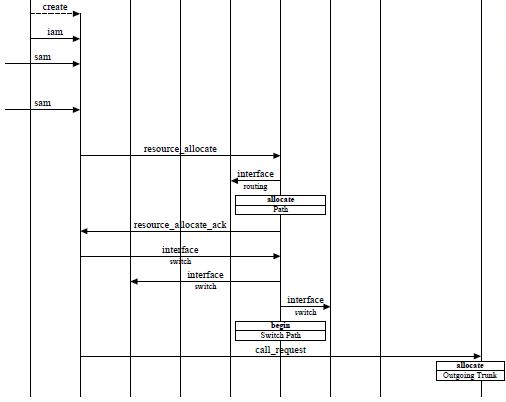The ISDN User Part – ISUP is responsible for setting up and releasing trunks used for inter-exchange calls. As its name implies, ISUP was created to provide core network signaling that is compatible with ISDN access signaling. The combination of ISDN access signaling and ISUP network signaling provides an end-to-end transport mechanism for signaling data between subscribers. Today, the use of ISUP in the network has far exceeded the use of ISDN on the access side. ISUP provides signaling for both non-ISDN and ISDN traffic; in fact, the majority of ISUP-signaled traffic currently originates from analog access signaling, like that used by basic telephone service phones.
The primary benefits of ISUP are its speed, increased signaling bandwidth, and standardization of message exchange. Providing faster call setup times than Channel Associated Signaling (CAS), it ultimately uses trunk resources more effectively. The difference in post-dial delay for calls using ISUP trunks is quite noticeable to the subscriber who makes a call that traverses several switches.

NOTE
Post-dial delay is the time between when the originator dials the last digit and the originating end receives an indication (or audible ringback).
In addition to its speed efficiencies, ISUP enables more call-related information to be exchanged because it uses Common Channel Signaling (CCS). CAS signaling severely limits the amount of information that can be exchanged over trunks because it shares a small amount of space with a call’s voice stream. ISUP defines many messages and parameters, therefore, allowing information about a call to be exchanged both within the network and between end-users. Although messages and parameters do vary between different countries, a given variant provides a standard means of exchanging information between vendor equipment within the national network, and to a large degree, at the international level.
ISUP consists of call processing, supplementary services, and maintenance functions. This chapter is divided into the following sections, which describe the specific components of ISUP:
-
Bearers and Signaling
-
ISUP and the SS7 Protocol Stack
-
ISUP Message Flow
-
Message Timers
-
Circuit Identification Codes
-
Enbloc and Overlap Address Signaling
-
Circuit Glare
-
Continuity Test
-
ISUP Message Format
-
Detailed Call Walk-Through
-
Circuit Suspend and Resume
-
ISUP and Local Number Portability
-
ISUP–ISUP Tandem Calls
-
Interworking with ISDN
-
Supplementary Services
-
Additional Call Processing Messages
-
Maintenance Messages and Procedures
